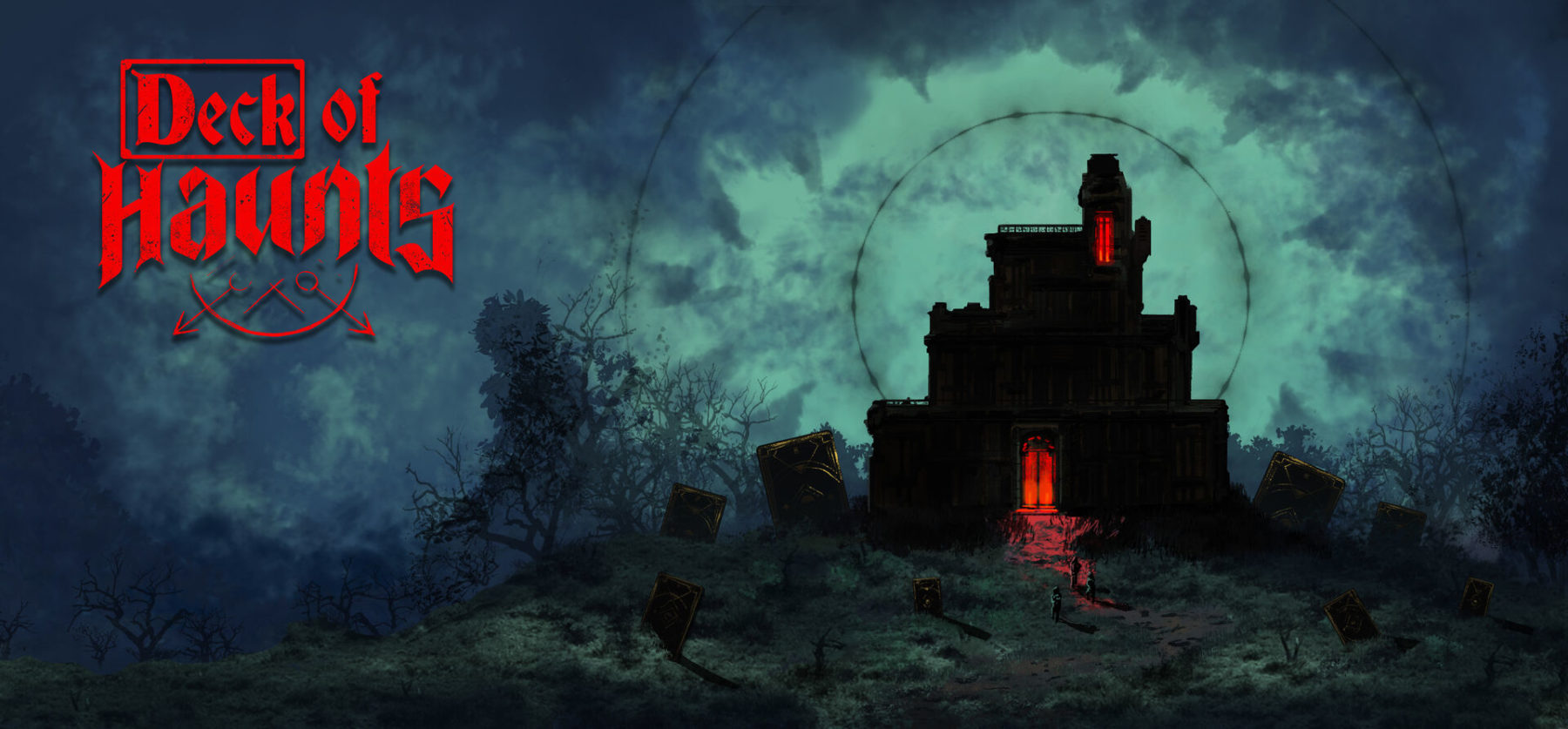Haunted houses are one of life’s great guilty pleasures. No matter what amusement park you frequent, you can rest assured there’ll be a mildly creepy building of terrible jump scares to lightly entertain you between the rollercoasters. Nothing like a Cabin in the Woods style movie to hilariously thrill with ridiculously over-the-top horror tropes, too. But what if I told you there was the opportunity to become the haunted house? Lure people in, drain their sanity, execute them mercilessly. That, dear reader, is Deck of Haunts.
A roguelike deckbuilder like no other, manifest yourself upon this ever-expanding and ever-consuming structure and overcome the folly of humanity, if you dare.
Deck Me To Hell
The concept for Deck of Haunts is so uniquely devilish, I’m surprised no one has developed it sooner. You are the haunted house. Your beating heart desires nothing more than the essence of humanity. No ghouls or demons with which to acquire them, however, which leaves you, as the house, to carefully drain and murder each foolish tourist that unfortunately frequents this not-so-humble abode.
Beginning each run with your heart chamber, two hallways and a couple of rooms, you must prevent nosy frequenters from reaching your heart, while keeping them in the house long enough to consume them. Each run consists of acquiring cards for your deck that can be deployed against the pitiful meat sacks befalling you, while also expanding your haunted residence with new rooms. Both of the basic and the more evil variety, too.
As you might expect, I was hooked with the idea of Deck of Haunts from the get-go. The atmosphere and creativity behind the game pour out of every orifice like the corruption of a demon itself. The tutorial gets you to grips with how things work immediately, and then you’re let loose. There’s barely any contextualisation or expounding lore here, which I did lament somewhat, as I think the idea could have gone in the direction of a Dungeon Keeper-type campaign.
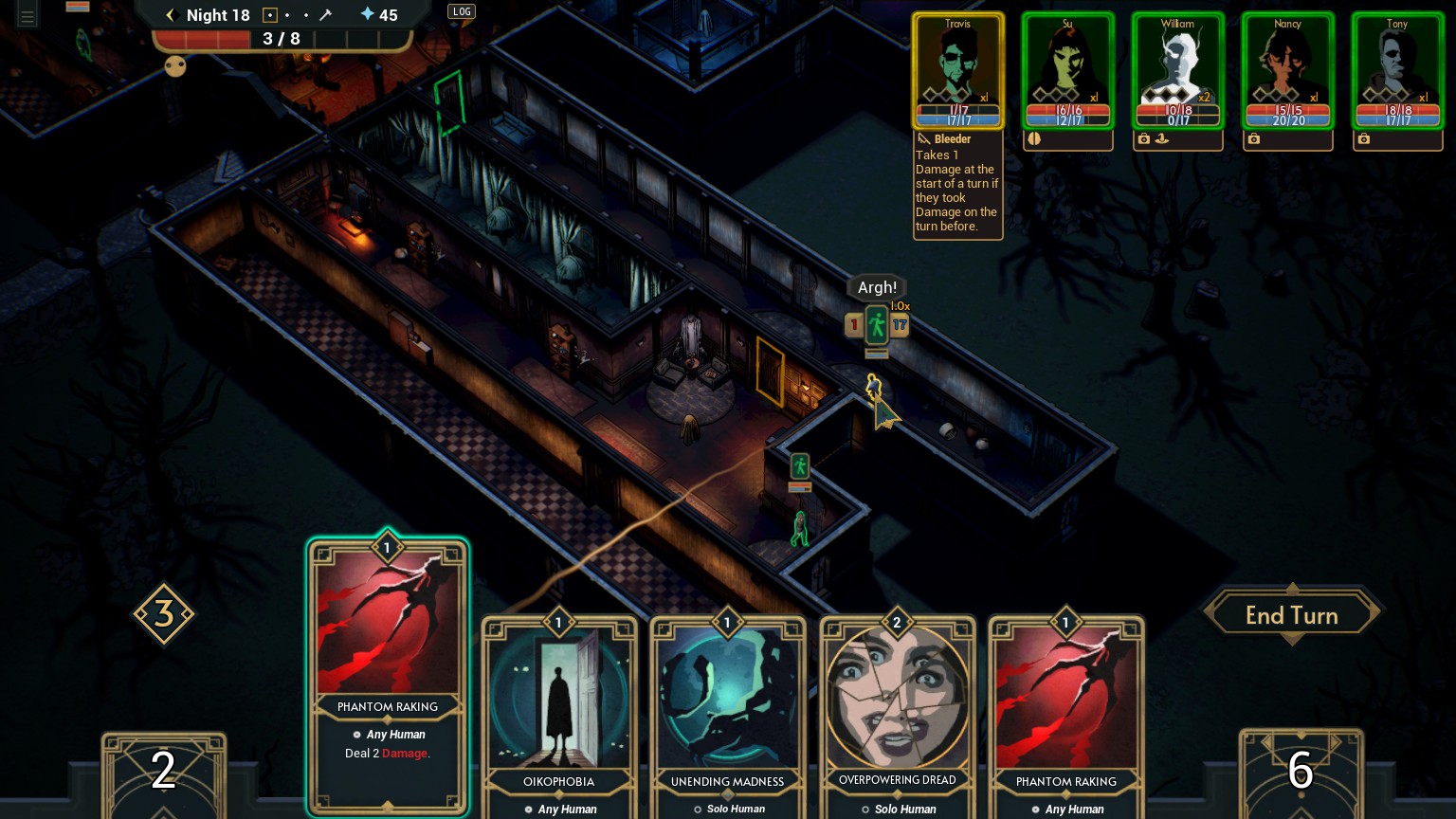
Deck The Halls Haunts
Each run will have you attempting to survive 28 nights. Different varieties of humans will enter, becoming increasingly more difficult to kill as the nights progress. Police officers can break through doors, while stone masons will beeline it for your heart. Moreover, thanks to their individualism, they’ll have unique traits to bother you with. Some may have flashlights to reduce their maximum tension level, while others may be able to move up to two rooms at a time. How very dare they.
In order to foil them, you’ll be provided with various cards that either drain people’s sanity, damage their health (ultimately killing them), or build up their tension. There are the odd trap cards or hexes with unique effects, too. Adding layers to the strategy is that some may only work on humans on their own in a room, or can affect all occupants of an area. As such, Deck of Haunts requires a good amount of concentration and tactical planning to accommodate for the various factors at play and how best to overcome your curious opponents.
Your initial runs in the game will end in failure simply because you won’t have noticed that the human you’re attacking has a buff that prevents more than four damage from occurring at one time, for example. It made a great first impression on me, and the mix of different cards lent itself to some great experimental decks being developed, both by luck and intent.
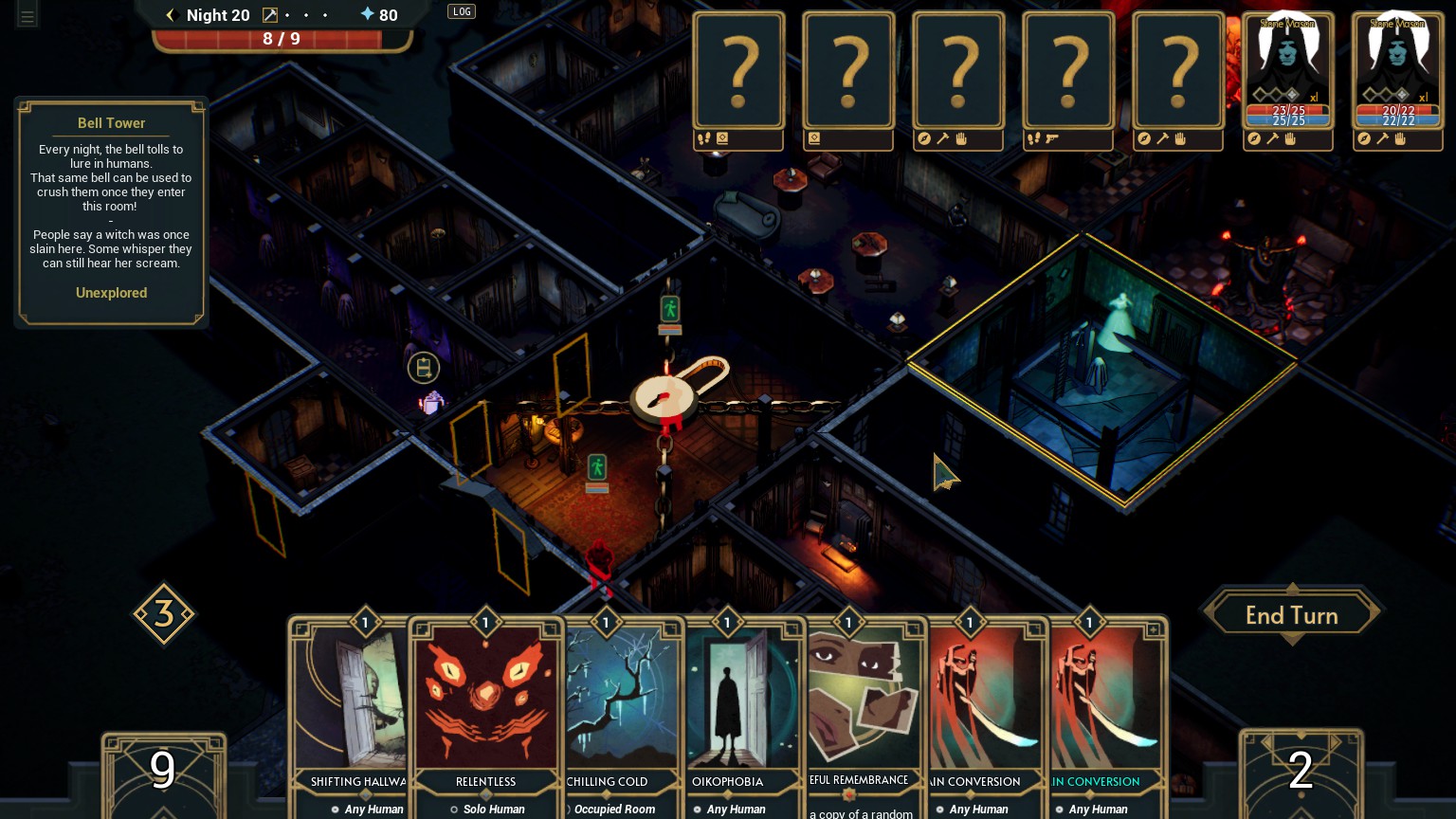
Haunt of Darkness
As an example, my second successful run involved a deck where I could multiply both my number of in-hand cards to play and my action points, allowing me to use dozens in one turn. Sounds alright on its own, until I picked up two of the “relentless” card, which adds damage exponentially based on how many cards you’ve already played that turn. Human has 100 health? No bother, the relentless card alone did 56 damage to them (it started at 2).
Stumbling upon and carefully curating these kinds of decks feels awesome. It’s what a deckbuilding roguelike is all about, after all. However, the balancing of this feels very skewed. Some runs are basically over before they start if you don’t pick the “right” varieties, as some just straight up suck in terms of practical use. Meanwhile, other runs, like the one I mentioned, become a complete breeze, owing to how wildly overpowered your hand will always be.
While you level up after each run, which I think (the game never confirms) unlocks new cards and room types, the persistent progression isn’t particularly clear or well-communicated. That’s if it even actually exists. There are no specific unlocks or upgrade paths; you simply boot up from scratch and go again, seeing what the netherealm will offer you this time. I liked the mix of cards and the strategy of accounting for a lot of moving parts, but Deck of Haunts doesn’t feel perfectly tuned or fleshed out yet.
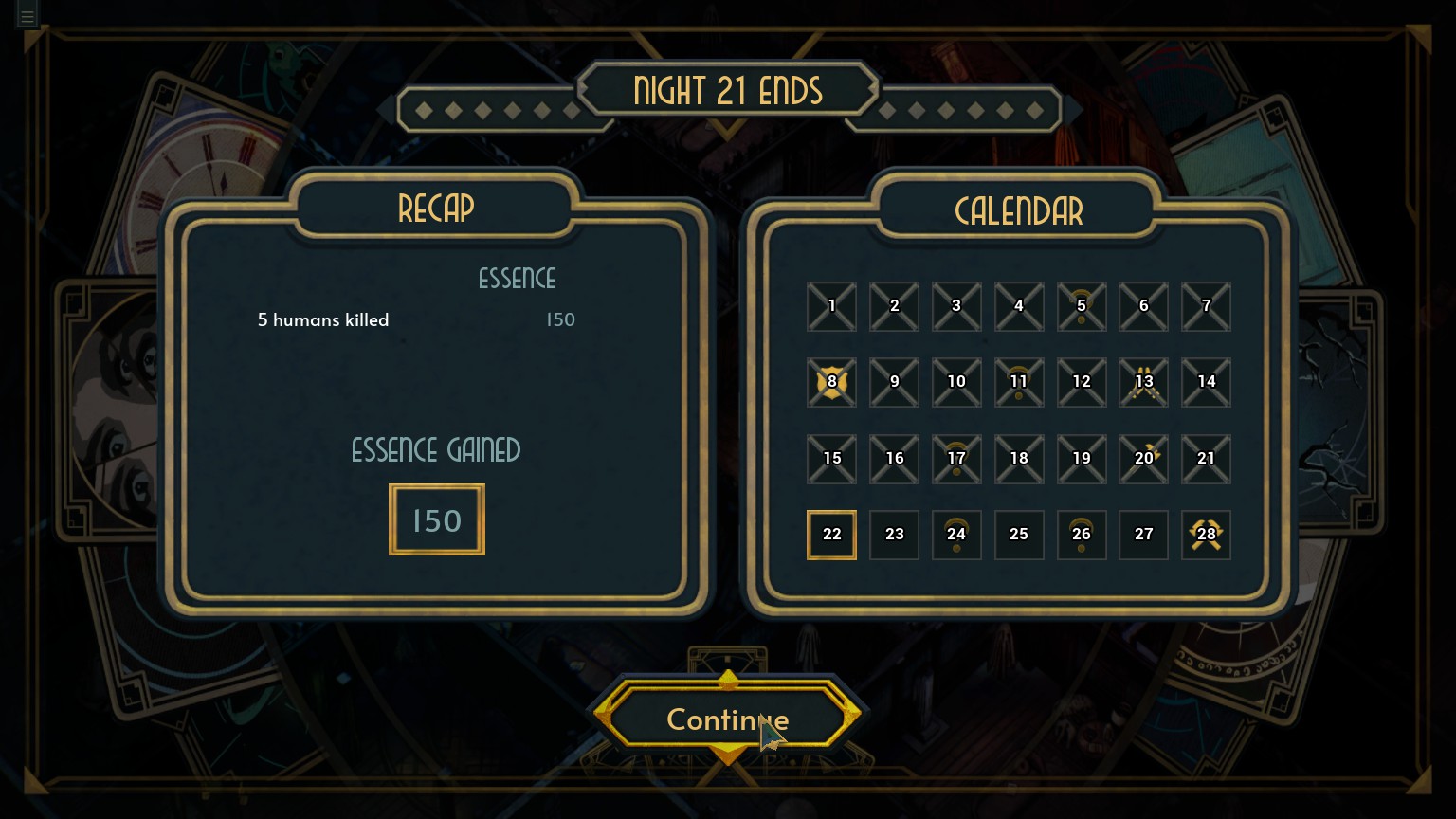
Split The Deck
The same pros and cons apply to the room-building mechanic in the game as well. It’s great getting to apply a weapons room which deals double damage, or expanding out a kitchen, ready to be converted into a mirror room. The options are manically devious and a love letter to horror tropes, but the actual application of it is relatively limited and not all that impactful.
Once I realised that funnelling enemies into weapons rooms was by some distance the best tactic for success, there was seldom reason to pick anything else. Altar rooms additionally let you sacrifice cards for extra action points, effectively trivialising some encounters. Becoming a badass force of destruction in roguelikes is part of the charm, but normally, that takes dozens of runs and multiple hours. I was doing this in Deck of Haunts by my third (and first successful) run.
Perhaps an additional difficulty option would be valuable to up the challenge and sense of consequence. I’m also sure some people will craft some disturbingly awesome labyrinthian structures that even Lovecraftian elder Gods would cease to fathom. However, I found it was much more effective to tack on one of each room endlessly to the starting point. One tile of a room counts the same as an 8-tiled room to the humans, meaning you can create 36 rooms from 36 tiles or just 4, with the former giving you much more likelihood of success as it scatters humans more effectively.
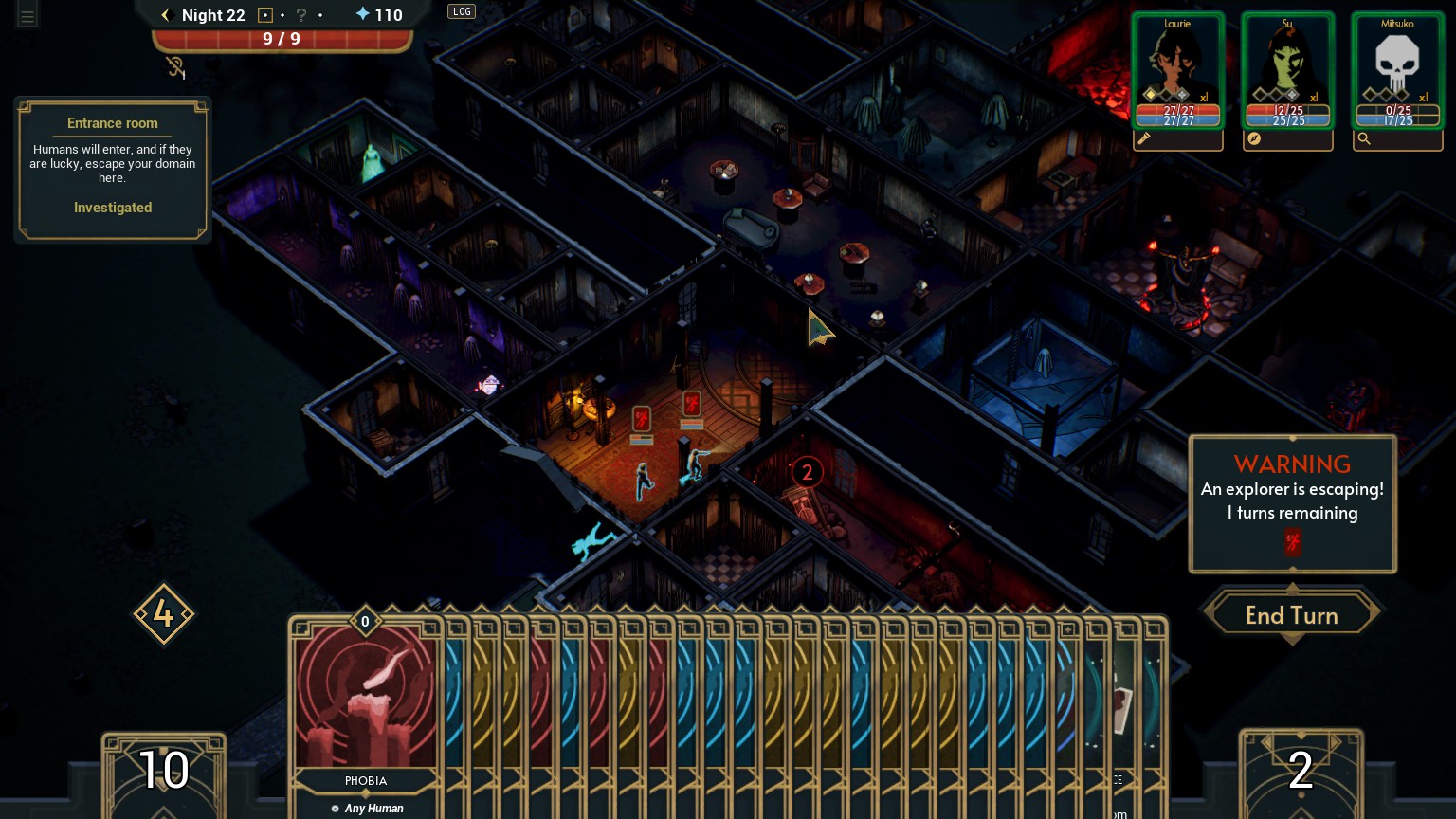
Unholy Flush
While this might sound like I’m rather negative towards Deck of Haunts, I want to emphasise that it’s, on the contrar,y pretty good. This is one of those times where I’m maybe more critical because of just how good the concept of it is. There’s so much stellar potential just waiting to be exorcised out of this rapidly corrupting body. Equally, it wouldn’t take much tweaking of the difficulty to smooth out the power fantasy bell curve.
Thankfully, the look and feel of Deck of Haunts is on point. This may well be the spawn of a satanic cult itself, but damn if it isn’t holy to behold. Erect a belltower and a ghostly premonition of a witch will skulk from room-to-room in an effervescent glow. I wouldn’t mind being haunted if it looked that tranquil as it devoured my soul. The design of the room types is crafty and inventive, while seeing a drained human in the fetal position, rocking back and forth before I ruthlessly execute them is pure wickedness.
The ambient sounds work debased wonders for the sense of atmosphere too. No real soundtrack or music is needed, just the clacking of your cards and the sound of scratching, bashing and slashing to warm the cockles of your foul heart. Deck of Haunts did have a couple of troublesome moments, for example, the achievements stopped popping after the first six, despite meeting the requirements. I also never figured out how to drop the bell from the belltower, despite it apparently being possible. Some rough edges to be ironed out, hopefully.
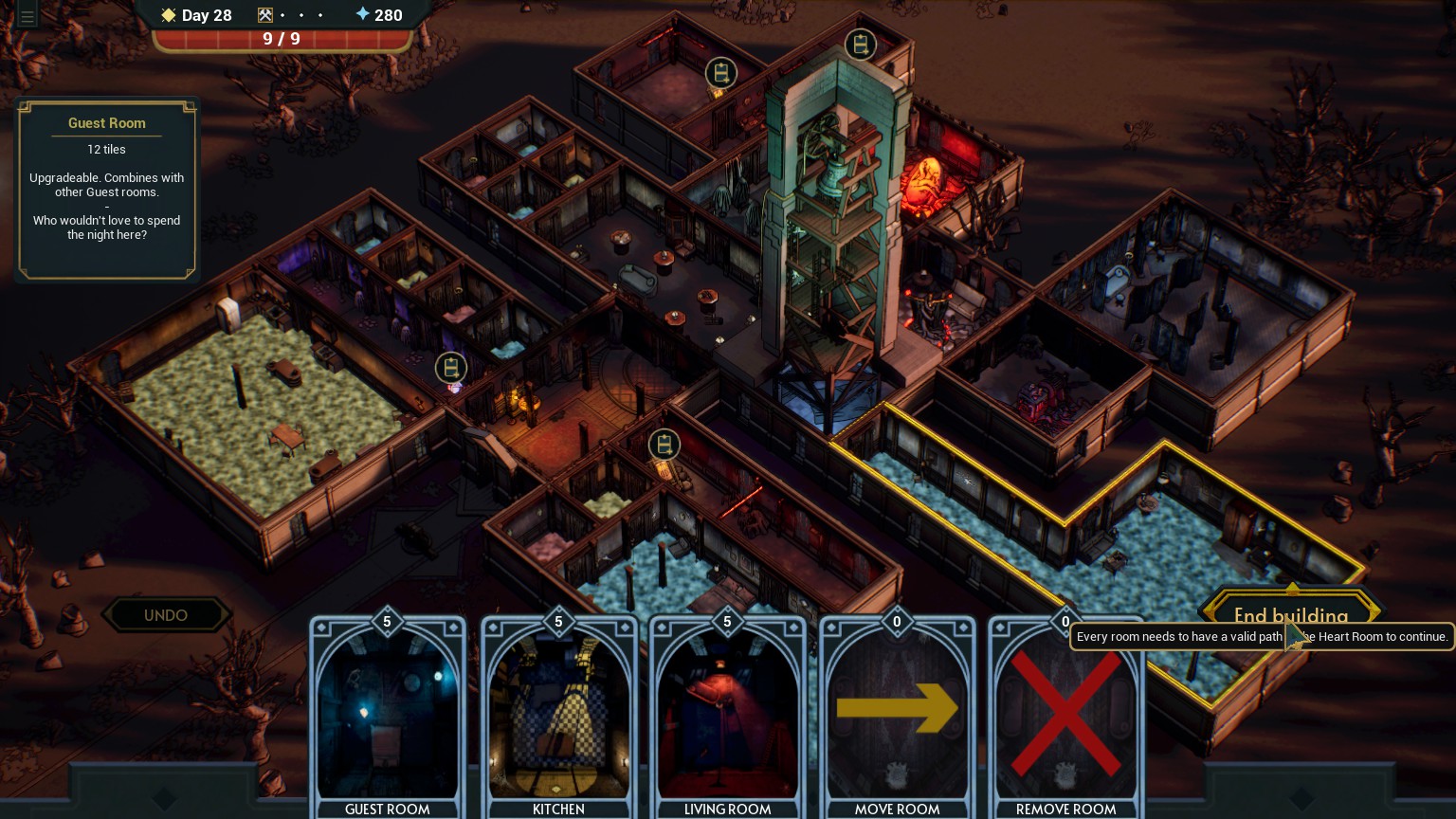
Jump Spare
Considering Deck of Haunts is based on one of life’s greatest guilty pleasures, the fact that it makes a haunted house this enticing is already a feat worth praising. I really commend the vision behind the concept, and I truly hope it reaches its potential and succeeds. It’s a fun game that basks in a nasty atmosphere and devilishly creative card deckbuilding.
I just wish there was a bit more of an obstacle worth overcoming to make the roguelike runs worth a few more repetitions. The lack of any real structure or campaign mode holds it back from fulfilling that satisfying bad-guy fantasy, compared to something like Dungeon Keeper that nailed it all those years ago. Moreover, the room building feels underdeveloped, with a lot more scope probably lurking menacingly below the surface.
In all, Deck of Haunts is a powerful yet minor demon. It’ll certainly cause some chaos, sow some discord and satisfyingly mince through some puny humans, but it lacks the full commitment to unadulterated evil to form a major spirit requiring exorcism. That’s not to say that with some more love (or is it hatred in this case?), or dare I say, with a sequel, it won’t be able to reach those depths of fantastical evil.
Deck of Haunts is available May 7th on PC via Steam (review platform).
Developer: Mantis
Publisher: DANGEN Entertainment, Game Source Entertainment
Disclaimer: In order to complete this review, we were provided with a promotional copy of the game. For our full review policy, please go here.
If you enjoyed this article or any more of our content, please consider our Patreon.
Make sure to follow Finger Guns on our social channels –Twitter, Facebook, Twitch, Spotify or Apple Podcasts – to keep up to date on our news, reviews and features.
